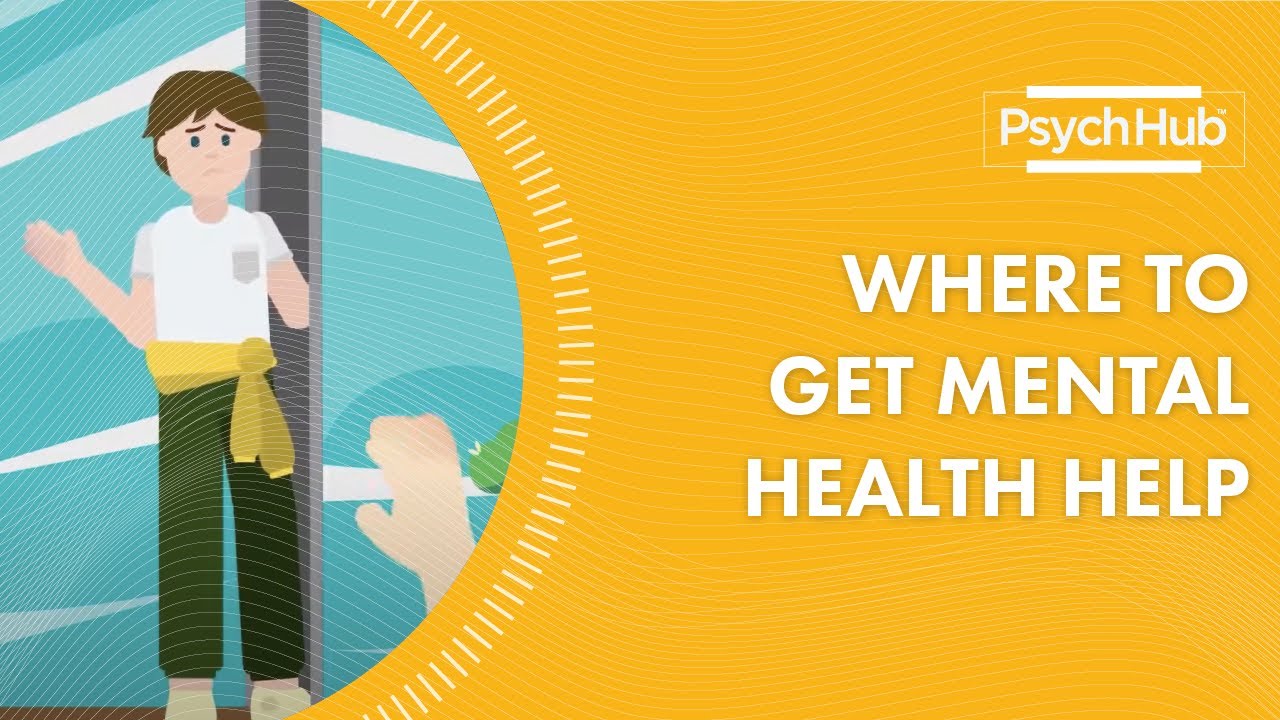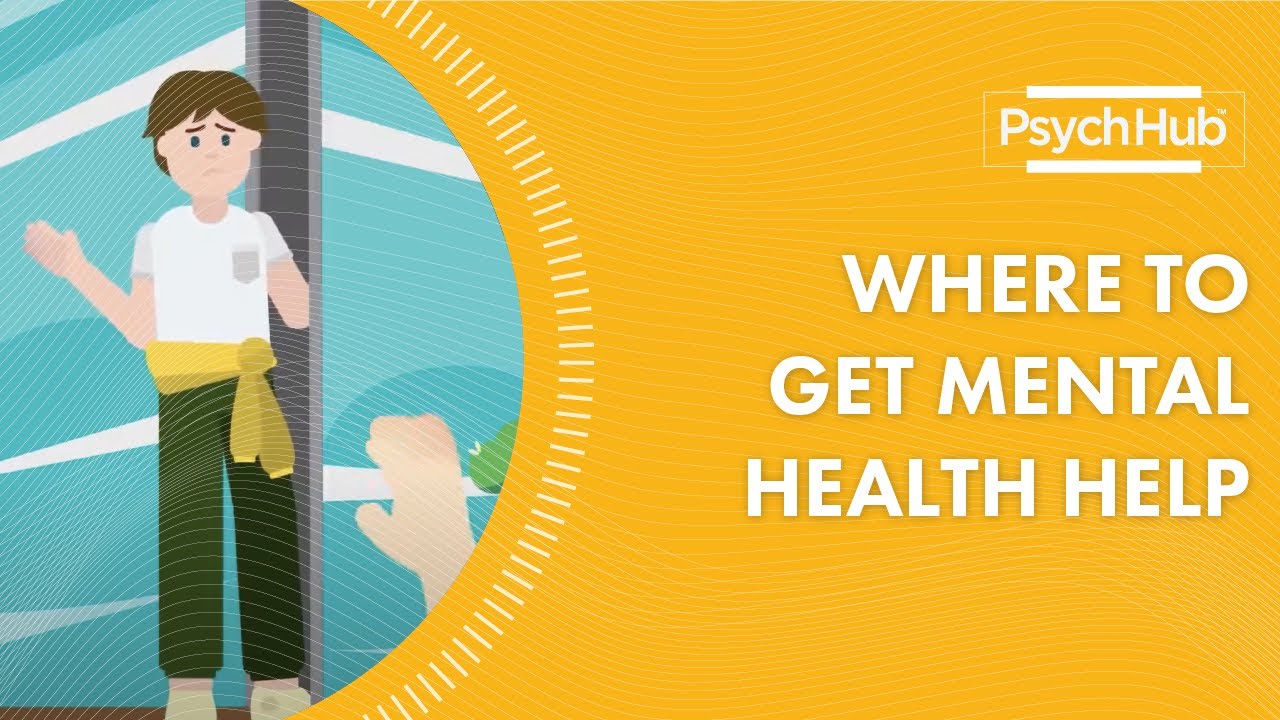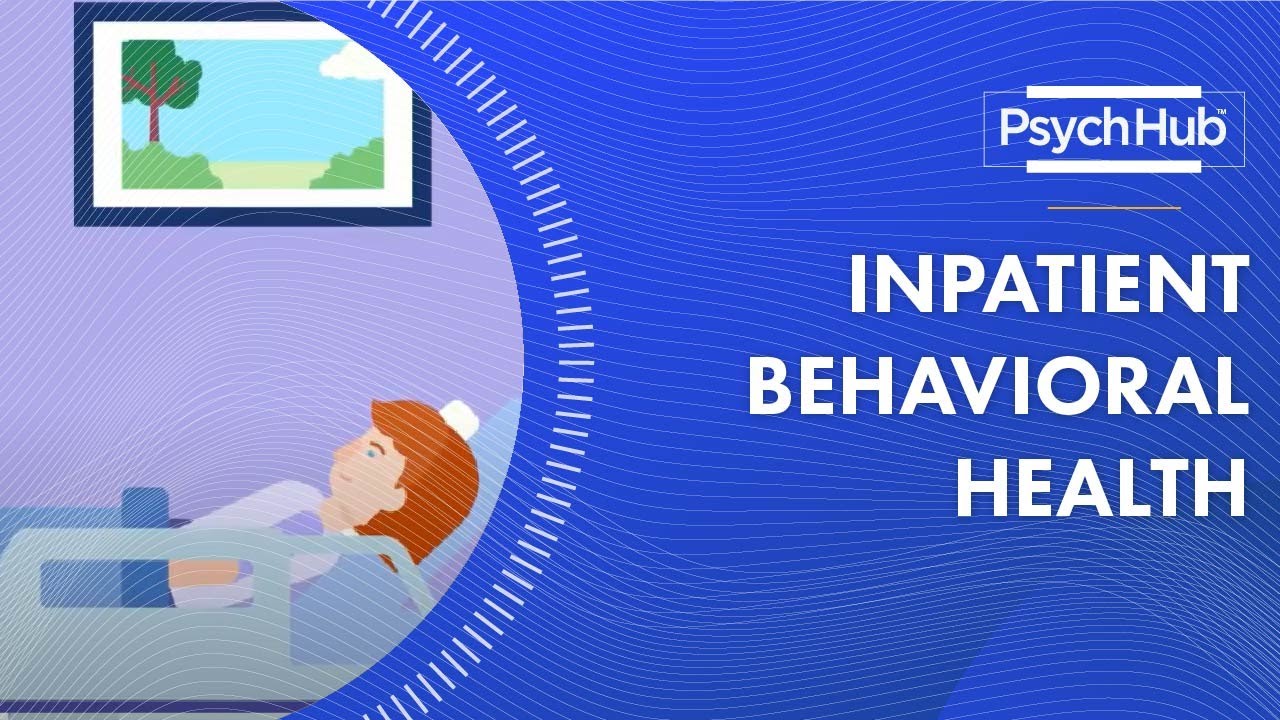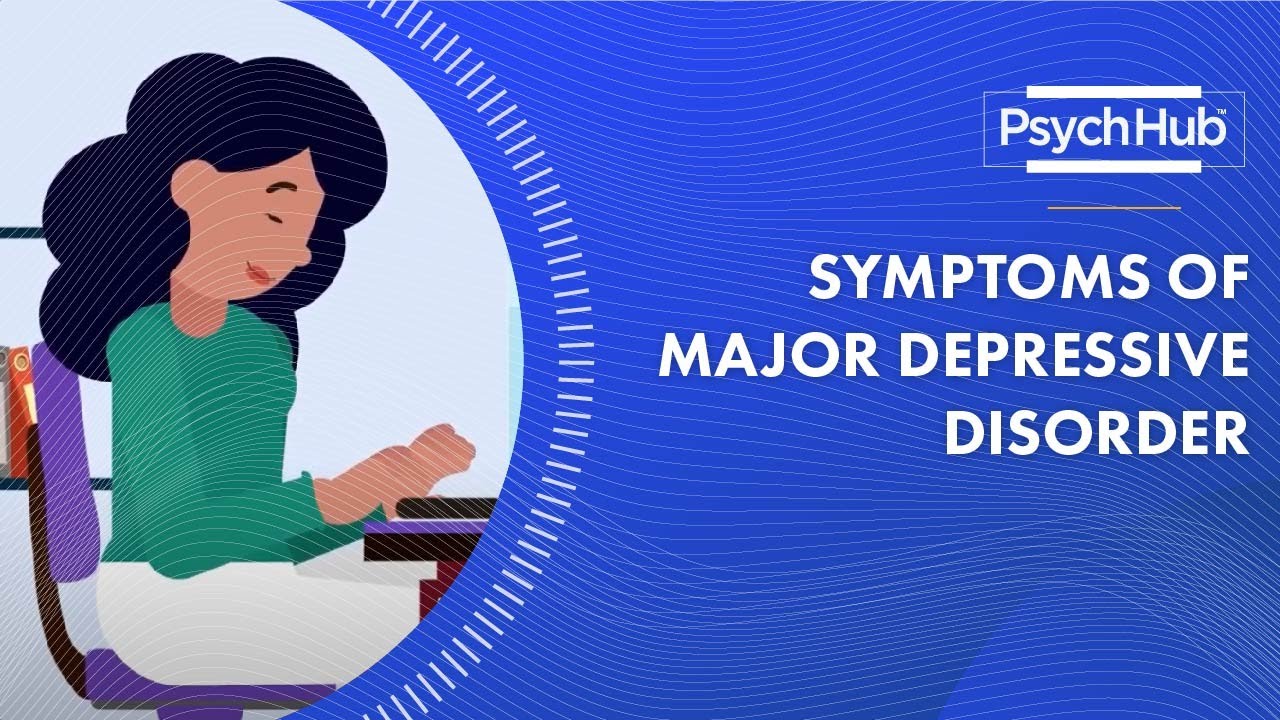Welcome to the world of mental health resources. Finding the right help for yourself or a loved one can be a daunting task, but with the right knowledge, you can make informed decisions. In this comprehensive video by Psych Hub, you’ll discover the different levels of care available for mental health treatment. From acute inpatient units to crisis centers, partial hospitalization programs to intensive outpatient programs, and traditional outpatient services, each option serves a unique purpose in addressing mental health symptoms and diagnosis. By understanding these options, individuals, families, and treatment providers can navigate the vast landscape of mental health help with confidence and clarity. So, join us in exploring the various avenues that can guide you towards a path of healing and support. (soft shimmering music)

Mental Health Terminology
Understanding the language of mental health is essential for effective communication and seeking proper treatment. Mental health terminology encompasses a wide range of terms that describe different conditions, symptoms, and treatment approaches. Here are some key terms you should familiarize yourself with:
- Depression: A mood disorder characterized by persistently low mood, feelings of sadness, and a loss of interest or pleasure in activities.
- Anxiety: A condition marked by excessive worry, fear, and apprehension, often accompanied by physical symptoms such as restlessness, fatigue, and difficulty concentrating.
- Bipolar disorder: A mood disorder characterized by periods of mania (elevated mood, increased energy) alternating with periods of depression.
- Schizophrenia: A chronic mental disorder characterized by delusions, hallucinations, disorganized thinking, and a loss of touch with reality.
- Post-traumatic stress disorder (PTSD): A mental health condition triggered by experiencing or witnessing a traumatic event, resulting in intrusive thoughts, nightmares, and avoidance of triggers associated with the trauma.
- Cognitive-behavioral therapy (CBT): A form of psychotherapy that focuses on identifying and changing harmful patterns of thinking and behavior.
- Medication management: The process of prescribing, monitoring, and adjusting medications to treat mental health conditions effectively.
- Stigma: The negative attitudes and beliefs associated with mental illness, leading to discrimination and social exclusion.
It’s important to note that these are just a few examples of mental health terminology. There are many more terms and concepts to explore as you delve deeper into the realm of mental health.
Positive Self-talk
The way we talk to ourselves has a significant impact on our mental health and well-being. Positive self-talk refers to the practice of using uplifting, supportive, and encouraging words and phrases to counter negative thoughts and cultivate a more positive outlook. Incorporating positive self-talk into your daily life can have profound benefits, including:
-
Improved self-esteem: Positive self-talk helps to counter negative self-perceptions and build a healthier sense of self-worth. By acknowledging your strengths, accomplishments, and positive qualities, you can boost your confidence and belief in yourself.
-
Increased resilience: Positive self-talk can help you develop a more resilient mindset, allowing you to bounce back from setbacks and challenges more effectively. By framing obstacles as opportunities for growth and learning, you can maintain a positive attitude even in difficult times.
-
Reduced stress and anxiety: Shifting negative thoughts to positive ones can help alleviate stress and anxiety. By focusing on calming and reassuring thoughts, you can calm your mind, regulate your emotions, and reduce the physiological response of stress.
To practice positive self-talk, start by identifying any negative or self-critical thoughts you may have. Challenge these thoughts by reframing them in a more positive and compassionate light. Replace self-defeating statements with affirmations and statements that reinforce your worth, capabilities, and potential. With time and practice, positive self-talk can become a natural and empowering habit.
Outpatient Behavioral Health
outpatient behavioral health refers to mental health services and treatments that are provided on an outpatient basis, meaning you receive care without being admitted to a hospital or staying overnight. Outpatient care offers individuals the opportunity to seek treatment while continuing their daily activities and living in their own communities. Here are some key aspects of outpatient behavioral health:
Types of Outpatient Services
-
Therapy: Outpatient therapy typically involves regular sessions with a mental health professional, such as a psychologist, psychiatrist, or licensed counselor. It can be conducted in individual, group, family, or couples settings, depending on the specific needs of the individual.
-
Medication management: For individuals who require medication to manage their mental health conditions, outpatient services often include regular appointments with a psychiatrist or psychiatric nurse practitioner. These healthcare providers can prescribe, monitor, and adjust medications as needed.
-
Intensive outpatient programs (IOPs): IOPs are structured treatment programs that offer a higher level of care than traditional outpatient therapy. They are suited for individuals who require more intensive treatment but do not need to be hospitalized. IOPs typically involve multiple sessions per week and may include a combination of therapy, medication management, and psychoeducation.
-
Partial hospitalization programs (PHPs): PHPs are more intensive than IOPs and provide a level of care closer to inpatient treatment. Individuals attend PHPs during the day and return home in the evenings. These programs typically offer a range of therapies, medical monitoring, and access to additional support services.
Benefits of Outpatient Care
Outpatient behavioral health services offer several benefits, including:
- Flexibility: Outpatient care allows individuals to receive treatment while maintaining their routines and responsibilities, such as work, school, and family commitments.
- Community integration: By accessing treatment services in their communities, individuals can benefit from the support networks and resources available to them close to home.
- Continuity of care: Outpatient care promotes ongoing support and follow-up, ensuring that individuals receive the necessary treatments, medications, and therapy to manage their mental health conditions effectively.
- Personalized care: Outpatient services can be tailored to meet the unique needs of each individual, allowing for individualized treatment plans and approaches.
When considering outpatient behavioral health options, it’s important to consult with a mental health professional to determine the most appropriate level of care based on your specific needs and circumstances.
How to Practice Mindfulness
mindfulness is a practice that involves intentionally paying attention to the present moment with openness, non-judgment, and acceptance. It involves directing your attention to your thoughts, emotions, bodily sensations, and the surrounding environment without getting caught up in judgments or clinging to particular experiences. Here are some steps to help you incorporate mindfulness into your life:
Step 1: Set Aside Time
Find a quiet and comfortable space where you can dedicate a few minutes to practicing mindfulness. Set aside a specific time each day to engage in this practice consistently. It could be in the morning, during a lunch break, or before going to bed.
Step 2: Pay Attention to Your Breath
Bring your attention to your breath as you breathe in and out naturally. Notice the sensation of the breath entering and leaving your body. If your mind wanders, gently redirect your focus back to the breath without judgment.
Step 3: Observe Your Thoughts and Emotions
Allow thoughts and emotions to arise without getting caught up in them. Observe them from a distance, acknowledging their presence without analyzing or judging them. Remember that thoughts and feelings are temporary experiences that come and go.
Step 4: Engage Your Senses
Bring attention to your senses and the physical sensations in your body. Notice the feeling of the ground beneath your feet, the sounds around you, and the taste and texture of food as you eat. Engaging the senses can help anchor you to the present moment.
Step 5: Practice Non-Judgment and Acceptance
Approach your experiences with curiosity, openness, and acceptance. Allow things to be as they are without trying to change or control them. Embrace both pleasant and unpleasant experiences with equanimity and non-judgment.
Step 6: Extend Mindfulness to Daily Activities
As you become more comfortable with formal mindfulness practice, try incorporating it into your daily activities. Bring mindful awareness to routine tasks such as brushing your teeth, washing dishes, or walking. This can help cultivate a greater sense of presence and appreciation in everyday life.
Remember, mindfulness is a skill that develops over time with regular practice. Be patient and gentle with yourself as you navigate this journey. Building mindfulness into your daily life can have a profound impact on your mental health, reducing stress and promoting overall well-being.
Mental Health and Social Media
With the widespread use of social media, it is important to recognize its impact on mental health and well-being. While social media provides various benefits, such as connecting with others and accessing information, it can also contribute to feelings of anxiety, depression, and low self-esteem. Here are some key considerations when it comes to mental health and social media:
Comparison and Negative Self-Perception
Social media platforms often present an idealized version of people’s lives, highlighting their achievements, travels, and happy moments. This can lead to feelings of inadequacy and negatively impact self-esteem as individuals compare themselves to these carefully curated online personas.
Cyberbullying and Online Harassment
Social media platforms can be a breeding ground for cyberbullying and online harassment. Negative comments, criticism, and harassment from others online can significantly impact a person’s mental health and well-being, leading to increased stress, anxiety, and even depression.
Fear of Missing Out (FOMO)
Constant exposure to the highlight reels of others’ lives on social media can contribute to a fear of missing out (FOMO). This fear can lead individuals to feel anxious and insecure, as they perceive themselves as not living up to the experiences and achievements of others.
Unrealistic Beauty Standards and Body Image
Social media often showcases unrealistic beauty standards, which can negatively impact body image and self-esteem. Constant exposure to edited and filtered images can lead to distorted perceptions of beauty and feelings of dissatisfaction with one’s appearance.
Strategies for Mental Well-being on Social Media
While it may not be feasible or desirable to entirely disconnect from social media, there are strategies you can employ to promote mental well-being:
- Limit your social media usage: Set boundaries and allocate specific times for using social media. Avoid mindlessly scrolling for extended periods and consider using apps that track and limit your usage.
- Curate your feed: Unfollow accounts that promote negative self-comparisons or trigger negative emotions. Follow accounts that inspire and uplift you, focusing on content that aligns with your values and interests.
- Practice self-compassion: Remind yourself that social media presents a distorted reality. Be kind to yourself and practice self-acceptance, recognizing that everyone has their own joys, struggles, and imperfections.
- Engage in offline activities: Balance your online presence with fulfilling offline activities. Spend time with loved ones, pursue hobbies, and engage in activities that bring you joy and fulfillment outside of the digital realm.
- Seek support when needed: If you find that social media is significantly impacting your mental health, don’t hesitate to reach out for support. Talk to a trusted friend, family member, or mental health professional who can provide guidance and assistance.
Remember, social media should be a tool that enhances your life, not one that detracts from your mental well-being. By being mindful of your social media usage and prioritizing self-care, you can navigate these platforms in a way that supports your mental health and promotes a positive online experience.
Symptoms of Major Depressive Disorder
Major depressive disorder (MDD), commonly referred to as depression, is a mental health condition that affects millions of people worldwide. It is characterized by persistent feelings of sadness, loss of interest or pleasure in activities, and a variety of physical and emotional symptoms. Here are some common symptoms of MDD:
Emotional Symptoms
- Persistent sadness: Feeling sad, empty, or hopeless most of the day, nearly every day, for at least two weeks.
- Loss of interest or pleasure: Decreased interest or pleasure in activities that were once enjoyable, including hobbies, socializing, or sex.
- Irritability or restlessness: Feeling easily agitated, irritable, or restless without a clear reason.
- Feelings of guilt or worthlessness: Experiencing intense and irrational feelings of guilt, worthlessness, or excessive self-blame.
- Difficulty concentrating: Trouble focusing, making decisions, or remembering details.
- Fatigue or loss of energy: Persistent feelings of fatigue, tiredness, or a significant decrease in energy levels, even without physical exertion.
- Sleep disturbances: Changes in sleep patterns, such as insomnia (difficulty falling asleep, staying asleep, or early morning awakening) or hypersomnia (excessive sleepiness or prolonged sleep).
- Appetite changes: Significant changes in appetite, resulting in weight gain or loss, and a noticeable increase or decrease in appetite.
- Thoughts of death or suicide: Recurrent thoughts of death, suicidal ideation, or suicide attempts.
Physical Symptoms
Physical symptoms of depression may manifest alongside emotional symptoms and often include:
- Persistent headaches or migraines.
- Digestive issues, such as stomachaches, nausea, or changes in bowel habits.
- Unexplained aches, pains, or physical discomfort.
- Slowed movements or speech.
It’s important to note that not everyone experiences every symptom of depression, and the severity and duration of symptoms can vary widely among individuals. If you or someone you know is experiencing these symptoms and they are interfering with daily life, it is important to seek help from a mental health professional for an accurate diagnosis and appropriate treatment.
What to Expect in Therapy
starting therapy can be an important step towards improving your mental health and well-being. While the therapy process may vary depending on the approach and the therapist, here are some general aspects you can expect when seeking therapy:
Choosing a Therapist
The first step in therapy is finding the right therapist for you. Consider factors such as their experience, credentials, and the specific issues they specialize in. Additionally, the therapeutic relationship is crucial, so finding someone you feel comfortable with and trust is essential.
Initial Assessment
During your first few sessions, your therapist will conduct an initial assessment to gather information about your background, current concerns, and goals for therapy. They will ask questions about your personal and family history, mental health symptoms, and any previous therapy experiences.
Establishing Goals
Together with your therapist, you will work to establish goals for your therapy. These goals provide a roadmap for your treatment and help guide the focus and direction of your sessions. They can be short-term or long-term, depending on your needs and the duration of your therapy.
Types of Therapy
There are various types of therapy, each with its own approach and techniques. Some commonly used therapies include:
- Cognitive-behavioral therapy (CBT): Focuses on identifying and changing negative thought patterns and behaviors that contribute to distress.
- Psychodynamic therapy: Explores unconscious patterns and unresolved conflicts that may influence thoughts, feelings, and behavior.
- Humanistic therapy: Emphasizes self-exploration, personal growth, and self-actualization.
- Family therapy: Involves sessions with multiple family members to address relationship issues and improve communication.
- Group therapy: Involves meeting with a therapist and a group of individuals experiencing similar challenges to provide support, share experiences, and learn from each other.
Your therapist will work with you to determine which therapeutic approach is best suited to your needs and goals.
Session Frequency and Duration
The frequency and duration of therapy sessions can vary depending on your individual circumstances and goals. Initially, sessions are often scheduled weekly, but they may be adjusted as therapy progresses. The length of therapy overall can range from a few sessions to several months or years, depending on your needs and the nature of your concerns.
Confidentiality
Therapy is a confidential space where you can feel safe sharing your thoughts, feelings, and concerns. Your therapist is legally and ethically bound to maintain your privacy and protect your confidentiality. However, there are limits to confidentiality when there is a risk of harm to yourself or others, or when required by law.
Progress and Evaluation
Throughout therapy, your therapist will regularly assess your progress towards your goals. They will help you track changes, identify patterns, and make adjustments as needed. Regular feedback and open communication are essential for a successful therapeutic journey.
Remember, therapy is a collaborative process, and your active participation, honesty, and openness are crucial for achieving meaningful outcomes. As you progress in therapy, you will have the opportunity to develop insights, learn coping skills, and work towards lasting change and growth.
Mental Health Myths
Myths and misconceptions surrounding mental health can perpetuate stigma, prevent individuals from seeking help, and contribute to misunderstandings about mental health conditions. By debunking these myths, we can foster a more supportive and inclusive environment for everyone. Here are some common mental health myths:
Myth 1: Mental illness is not real.
Fact: Mental illnesses are medical conditions that affect the brain and impact a person’s thoughts, feelings, and behaviors. They are recognized by reputable medical and psychological associations worldwide.
Myth 2: People with mental illness are violent and dangerous.
Fact: The majority of people with mental illness are not violent or dangerous. In fact, individuals living with mental health conditions are more likely to be victims of violence than perpetrators.
Myth 3: Only weak people experience mental health problems.
Fact: Mental health conditions can affect anyone, regardless of their strength, character, or willpower. Factors such as genetics, biology, and life experiences contribute to mental health, and seeking help is a sign of strength.
Myth 4: Mental health problems are a result of personal weakness or character flaws.
Fact: Mental health conditions are not character flaws or personal weaknesses. They are complex disorders influenced by genetic, environmental, and biological factors. Blaming individuals for their mental health struggles only perpetuates stigma.
Myth 5: Therapy is only for people with severe mental illness.
Fact: Therapy is beneficial for a wide range of mental health concerns, from mild to severe. It can help individuals develop coping skills, improve relationships, manage stress, and enhance overall well-being.
Myth 6: Children cannot have mental health problems.
Fact: Children can experience mental health conditions, even at a young age. Early intervention and appropriate support are crucial for children’s mental health.
Myth 7: People with mental illness cannot recover or lead fulfilling lives.
Fact: With proper treatment, support, and self-care, individuals with mental illness can recover, manage their symptoms, and lead productive, fulfilling lives. Recovery is a unique and ongoing process.
Debunking mental health myths is an important step towards creating a more understanding and compassionate society. By educating ourselves and others, we can promote acceptance, encourage help-seeking, and support those living with mental health conditions.
How to Tell if Therapy is Working
When embarking on a therapeutic journey, it’s natural to wonder if therapy is having a positive impact on your mental health. While the effectiveness of therapy varies depending on individual circumstances, there are some signs that can suggest therapy is working for you. Here are a few indicators to consider:
Increased Self-Awareness
Therapy often involves exploring and gaining insight into your thoughts, emotions, and behaviors. If you find yourself becoming more self-aware and understanding the underlying patterns and motivations behind your actions, it may be a sign that therapy is helping you develop a deeper understanding of yourself.
Improved Coping Skills
Therapy equips individuals with tools and techniques to manage their mental health challenges effectively. If you notice yourself utilizing these coping skills in your daily life and experiencing positive outcomes, it may indicate that therapy is helping you develop healthier ways of dealing with stress, anxiety, or other difficulties.
Enhanced Relationships and Communication
As you work through therapy, you may begin to notice improvements in your relationships and communication with others. Therapy can teach valuable skills such as active listening, conflict resolution, and boundary-setting, which can contribute to healthier and more fulfilling connections with loved ones.
Increased Emotional Regulation
If therapy is helping you better regulate your emotions, it may be a positive sign of progress. By identifying triggers and learning techniques to manage intense emotions, therapy can empower you to respond more constructively and minimize the impact of emotional ups and downs.
Reduced Symptoms
One of the primary goals of therapy is symptom relief. If you observe a decrease in the severity or frequency of your mental health symptoms, such as anxiety or depression, it indicates that therapy is likely contributing to your well-being.
Improved Quality of Life
Therapy is intended to improve your overall quality of life by addressing the challenges that impact your well-being. If you find yourself experiencing a higher level of life satisfaction, increased self-confidence, and a greater sense of purpose and fulfillment, therapy may be playing a role in these positive changes.
Remember, therapy is a journey, and progress may be gradual. It’s important to maintain open communication with your therapist and discuss any concerns or questions you may have. They can help you assess your progress and make adjustments to your treatment plan as necessary.
Psychotherapy
Psychotherapy, also known as talk therapy or counseling, is a form of treatment that aims to improve mental health and well-being through therapeutic conversations. It involves a trusting and collaborative relationship between the therapist and the client, where they work together to explore emotions, thoughts, and behaviors. Here are some key aspects of psychotherapy:
Therapeutic Approaches
There are numerous therapeutic approaches used in psychotherapy, each with its own principles, techniques, and goals. Some common approaches include:
- Cognitive-behavioral therapy (CBT): Focuses on identifying and changing negative thought patterns and behaviors that contribute to distress.
- Psychodynamic therapy: Explores unconscious patterns and unresolved conflicts that may influence thoughts, feelings, and behavior.
- Humanistic therapy: Emphasizes self-exploration, personal growth, and self-actualization.
- Family therapy: Involves sessions with multiple family members to address relationship issues and improve communication.
- Group therapy: Involves meeting with a therapist and a group of individuals experiencing similar challenges to provide support, share experiences, and learn from each other.
Therapists often integrate various approaches and tailor the treatment to meet the specific needs and goals of the client.
Confidentiality and Trust
Confidentiality is a fundamental aspect of psychotherapy. Therapists are bound by ethical and legal guidelines to protect client privacy and maintain confidentiality. This creates a safe and trusting environment where clients feel comfortable sharing their thoughts, feelings, and concerns without fear of judgment or repercussions.
Active Listening and Empathy
Therapists practice active listening, paying close attention to the client’s words, emotions, and body language. They strive to understand the client’s perspective and experiences, offering empathy and unconditional positive regard. This non-judgmental stance helps create a supportive and validating therapeutic space.
Goal-oriented and Collaborative Approach
Therapy is a collaborative process where the therapist and client work together to set goals and develop a treatment plan. The therapist provides guidance and support while respecting the client’s autonomy and individuality. Regularly reviewing progress and adjusting the treatment plan ensures that therapy remains focused on the client’s specific needs and goals.
Duration and Frequency
The duration and frequency of therapy sessions vary depending on individual circumstances and treatment goals. Sessions typically last 45-60 minutes and typically range from once a week to once a month. The length of therapy itself can vary widely, ranging from a few sessions to several months or even years.
Continuity of Care and Support
Psychotherapy promotes ongoing support and continuity of care. Therapists often provide resources, tools, and strategies for clients to practice and implement outside of session. They may also collaborate with other healthcare providers, such as psychiatrists or primary care physicians, to ensure comprehensive and holistic care.
Psychotherapy can be a transformative experience, providing individuals with the tools and insights to overcome life’s challenges, improve their mental health, and enhance their overall well-being. By fostering self-awareness, resilience, and healthier coping strategies, psychotherapy empowers individuals to lead more fulfilling and meaningful lives.




